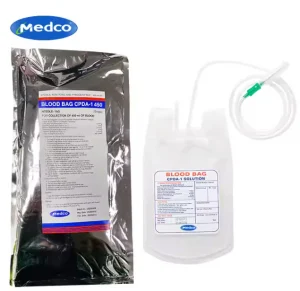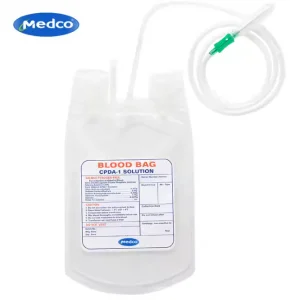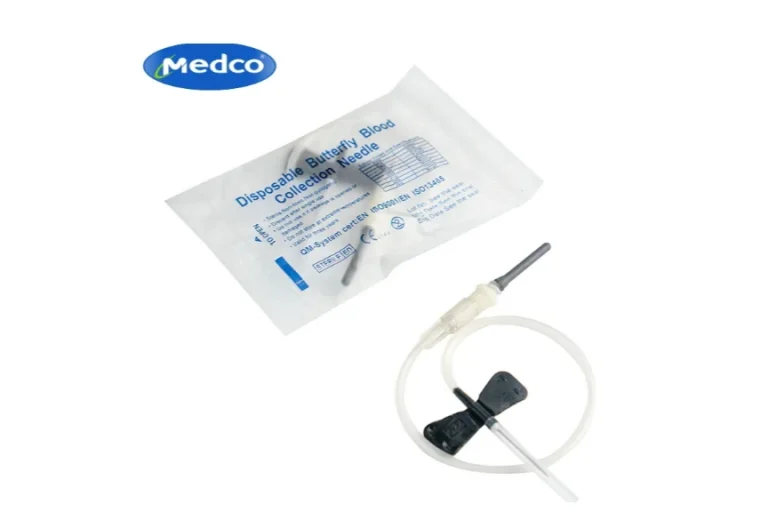
Overview of Blood Collection Bag Types
When it comes to the medical field, blood collection bags play an important role, being widely used for collecting, storing, and transporting samples of blood. Since blood collection bags are used for very specific purposes, each type has its own features and applications. The main types of blood collection bags are single, double, triple, and quadruple, each having its specific usage. Therefore, knowledge about each bag is quite important for the specialists working in the healthcare area.
Single Blood Collection Bags
Design Purpose and Applications Single blood collection bags are designed to collect one unit of blood from a donor. These types of bags require minimal complexity and are simple in design, with one tubing segment. Additionally, they are intended for the collection of whole blood. Single blood collection bags have become widely applied in the standard blood donation process since they can be made of commercial-grade materials that can guarantee that the blood is safe and sterile. These bags may also contain an anticoagulant, which prevents the blood from clotting and, therefore, makes it safe for the patient for the time of storage. They are especially valuable for patients, who need straightforward transfusions, or any procedures, that imply using whole blood.
Double Blood Collection Bags
Double blood collection bags add an extra layer of versatility to the single one. They have two compartments, which let to split the blood components while collecting them in one process. For blood banks, this feature is especially useful, as the same donation might be required to supply both red blood cells and plasma, for example. The design of double bags is characterized by having extra tubing, which makes it easier to transfer blood components into a second, storage bag. Thus, each of the blood components is effectively processed and stored, enabling the blood bank staff to get the most out of each donation and reach a larger number of treatment options for patients.
Triple Blood Collection Bags
Triple blood collection bags are even more versatile, which unite the possibilities of double bags and allow to collection of three components from one donation. They consist of a general PVC layer, several compartments and tubes, and a ‘T’ shape. The arrangement of these elements makes it possible to collect plaque, plasma, and red blood cells, having previously separated them from the donor. Because of such an arrangement of compartments, these bags are used in various clinical conditions, including operations and care for patients with traumas. After collection and further, separation, the collected blood components can be used for diverse purposes, which significantly extends the ability of medical professionals to provide alternative therapies for their patients. The use of triple bags helps to easily manage donors and collected products.
Key Components and Features of Various Bag Types
In order to choose suitable blood collection bags, it is vital to take into account their main components and characteristics that define their performance and usability. Such features as material composition, anticoagulant solutions, and tubing requirements have a significant impact on the bag’s proper functioning and the safety of collected blood. Several types of commonly used blood collection bags include those made of PVC or registered as universal, and their distinguishing features are characterized below.
Material Composition and Quality
Blood collection bags are expensive and largely depend on the materials utilized for their production. High-quality plastic, such as medical-grade, is used to ensure the strength of bags in terms of withstanding physical deformations and not being too clingy. Moreover, the employed plastics are supposed to be flexible and resist chemical reactions. Frequently, manufacturers use ethylene vinyl acetate ( EVA ) or polyvinyl chloride for blood collection bags as they are best in providing an optimal barrier against environmental influences and are compatible with blood products. Material properties are strictly tested to make the attributes of bags irreversible and ensure that these products meet safety and regulatory requirements. This choice also determines the shelf life and storage possibilities for blood.
Anticoagulant Solutions Used in Bags
The presence of a blood collection/deposit bag does not signify the independence of its functionality from the anticoagulant that neither allowed the blood preservations over time nor contributed to any other storage-related benefits, regardless of storage period or other factors. Therefore, anticoagulant solution dominates any blood deposit bag – even if the sides of the equation are represented along with one another. Among the commonly used in such bags, anticoagulant solutions are citrate-phosphate-dextrose, citrate-phosphate-dextrose-adenine, and anticoagulant citrate dextrose, which clearly differ in what sort of blood they are capable of preserving, as well as in terms of components’ timeframe. In conclusion, it is critical for healthcare professionals to understand their usual bag types and their performance in terms of blood preservation matters to do right by the patients. Thus, we can see that anticoagulant solutions are an indispensable and central part of such bags that effectively regulate the outcomes expected when it is actual blood storage, unification, transfusion, or any other blood product formatting.
Tubing and Needle Specifications
Both tubing and needle specifications are critical to the efficiency of the blood collection process. In particular, the diameters and length of tubings connected to the blood collection bags affect flow rates during the collection. In turn, flow rates define not only comfort for donors but also the capacity of blood collected. Moreover, the use of needles of different kinds, including those with certain safety features and those for different vein types, is critical to both the safety and efficiency of the procedure. Medco provides detailed specifications of tubing and needles both made by Medco and used with their blood collection bags. These specifications must be followed by healthcare providers to ensure a seamless and effective blood collection.
Applications and Uses of Different Blood Collection Bags

Usage in Whole Blood Collection
There are various applications of blood collection bags, and one of the most frequent ones is associated with the collection of whole blood. Normally, for multiple procedures including blood transfusions healthcare staff requires a unit of whole blood, and single blood collection bags are fitted for this purpose. In general, the use of blood bags is versatile; both in relatively calm settings and under emergency circumstances when there is an urgent demand for blood. During tests, it can be necessary to ensure that blood collection is completed employing sterile techniques and it strictly corresponds to safety requirements for neither donor nor the blood collected to become contaminated.
As follows from the presented material, blood collection bags are used to collect whole blood from donors. The bags for whole blood collections are connected to a needle, which is introduced into a donor’s vein. The collected blood can either be directly used for infusion in the blood replenishment of a patient or can be sent to a laboratory where it is tested for blood type, screened for different diseases, and cross-matched with the blood of the potential blood recipient. Separated bags use an anticoagulant solution in a single bag to maintain the blood in the bag’s liquid medium and stabilize the formed elements. Considering the information mentioned above, managing and handling whole blood properly are significant, and it is important for healthcare providers to be aware of the function of blood collection bags to guarantee high-quality transfusion medicine care.
Specific Use Cases in Component Separation
Blood collection bags containing incorporated blood components such as double and triple bags segregating red cells, plasma, and platelets have emerged and received more attention over the last period. The opportunity to divide blood components based on the required treatment is beneficial for transfusion medicine. For example, one donation can provide multiple treatment options, which can be used to treat either type of anemia or hematological conditions, such as clotting capabilities.
In modern healthcare settings, the success of double and triple bags has revolutionized practices due to the ability to maximize donation. This segregation capacity is supportive of many clinically approved applications since each bag of blood can be designated for specific treatments. As a result, patients who receive transfusions benefit from therapies that are more productive and personalized. Moreover, processing blood products separately ensures that donors’ products are directed appropriately, and this practice is consistent with trends in the field, such as precision medicine.
Medco’s Contribution to Quality Blood Collection Products
Introduction to Medco’s Product Range
Medco has created a wide range of blood collection bags, composed of single, multiple, double, triple, and quadruple units, engineered from advanced materials, with components ensuring secure blood collection and effective bag separation. All products are in full compliance with all industry criteria, having the ability to meet laboratory and healthcare requirements for use as blood transfusion equipment, and demonstrating the firm’s commitment to high quality and customer service.
While having a focus on innovativeness, Medco improves the blood collection bag design that reflects the feedback of healthcare professionals and the overall trends. From the design, one can trace that the choice of anticoagulant solutions, compartments, and even tubing reflects the company’s commitment to developing the items based on the best practices in blood management. As healthcare settings continue to improve, Medco offers tools tailored to the new practices and professional requirements.
Rehabilitation Appliances as an Extension of Medco’s Offerings
Medco expands its product range to include Rehabilitation Appliances. These appliances are designed to aid in the rehabilitation process of patients. Medco offers a variety of options, such as wheelchairs and rollator folding walkers, to cater to different needs. The wheelchairs are available in both children and adult sizes, with options for big wheels or folding mechanisms. Made from high-quality materials like stainless steel and aluminum alloy, these appliances prioritize comfort and functionality. Medco’s Rehabilitation Appliances are certified by CE and are popular among customers in various countries and regions. With their commitment to quality and customer satisfaction, Medco continues to be a trusted supplier in the medical industry.




